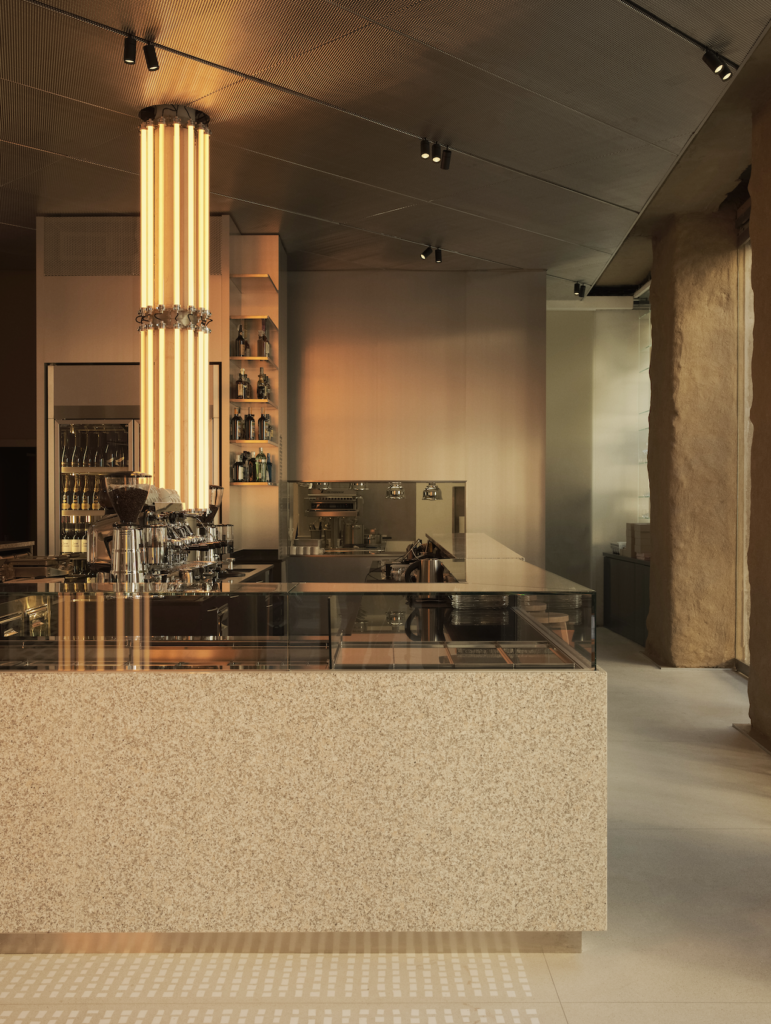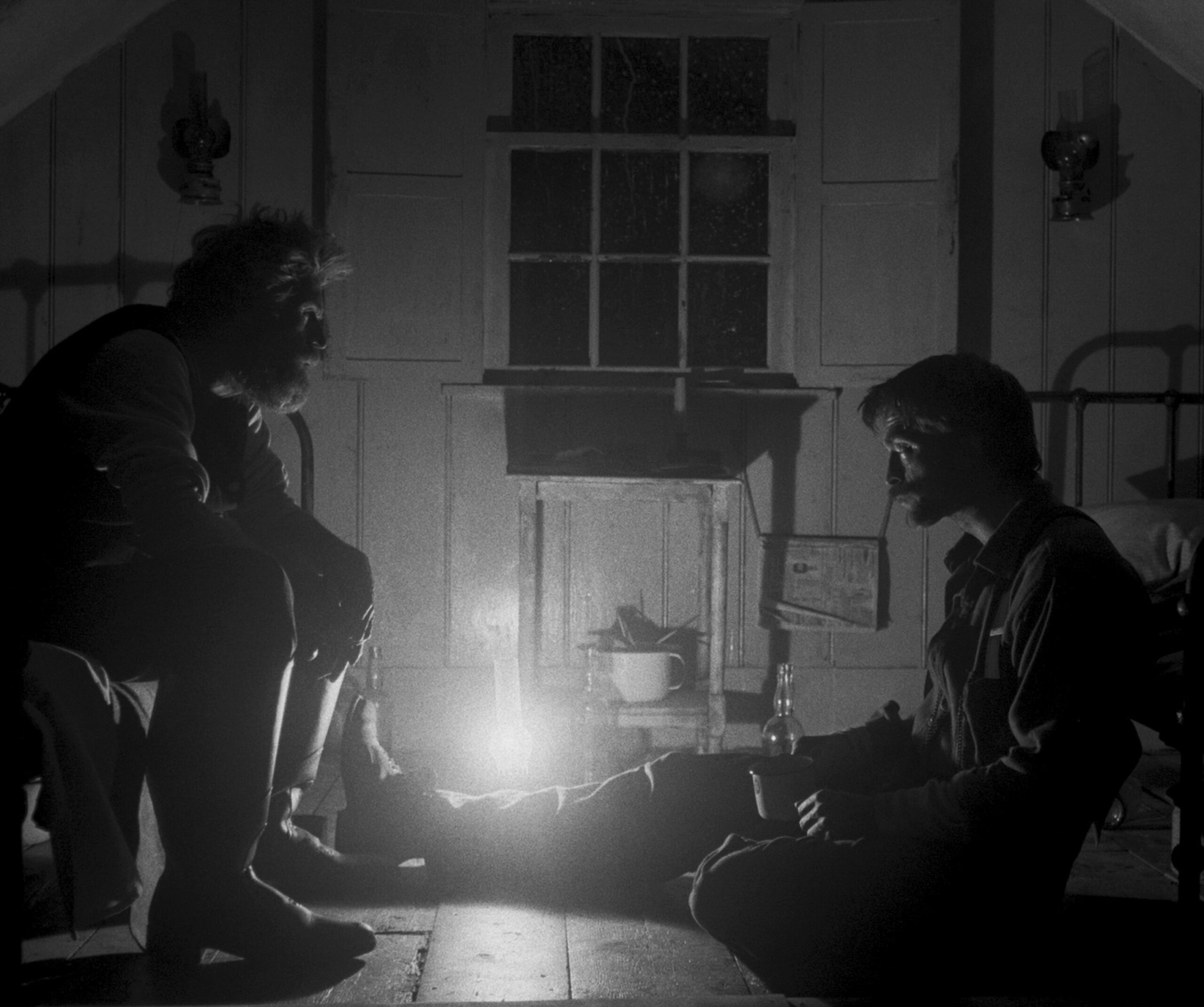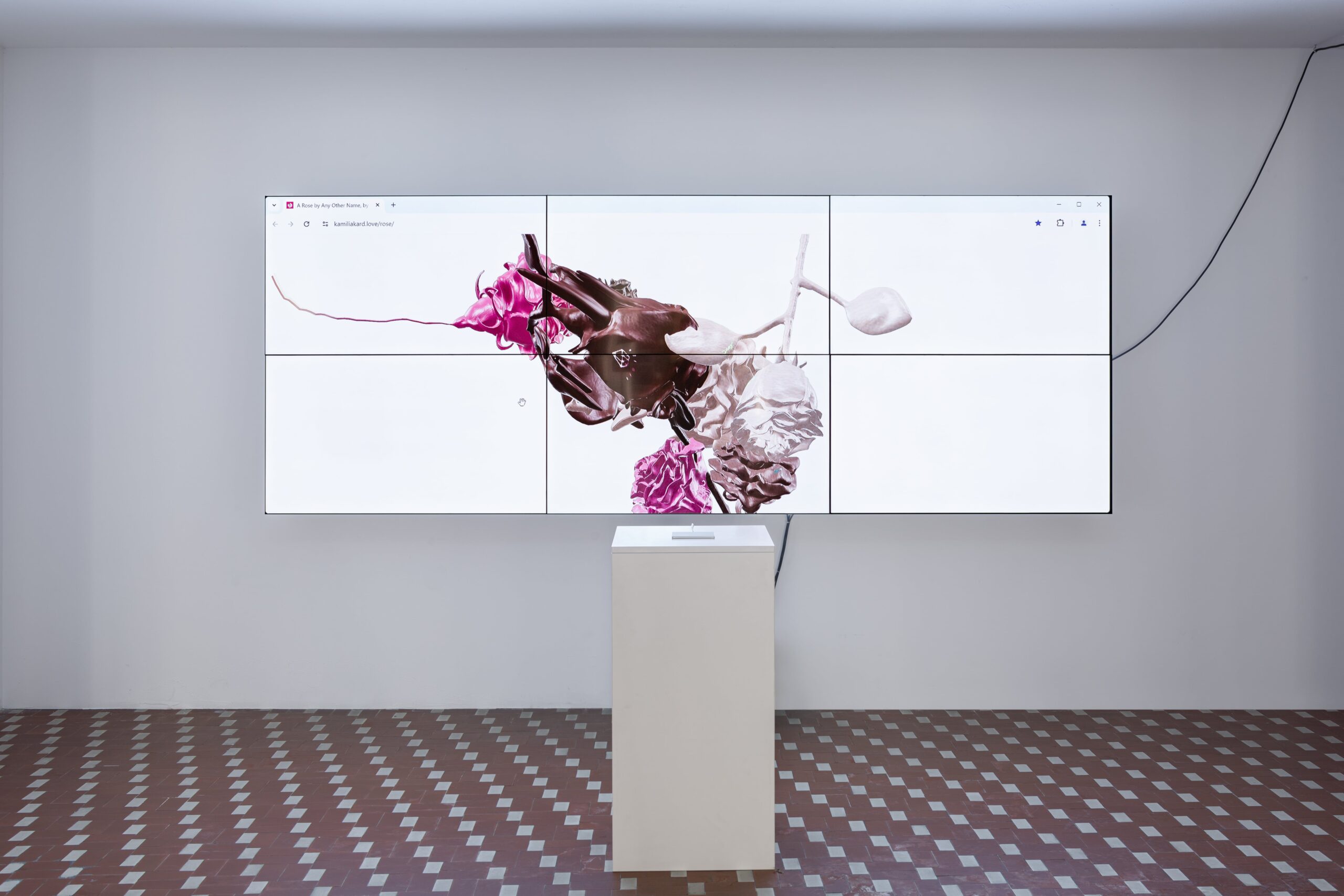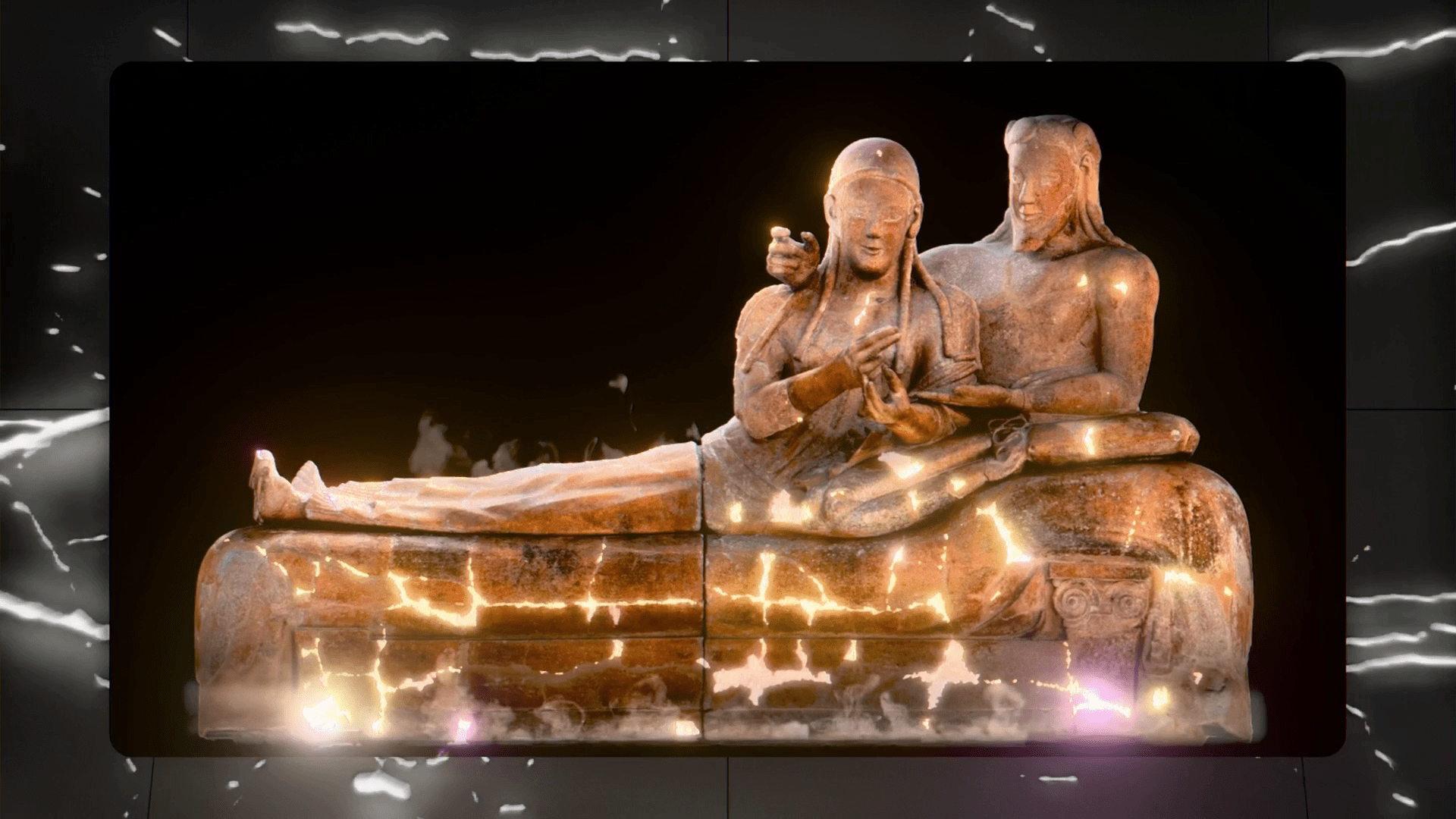In Milan’s heart, Palazzo Trussardi stands as a 19th-century landmark, home to the Trussardi brand since 1996. In late 2022, it reopened with a new design by bplus.xyz and Studio B612‘s lighting. B612, over the years, has mastered lighting design, creating unique concepts for global fashion houses, and blending architectural elements seamlessly.
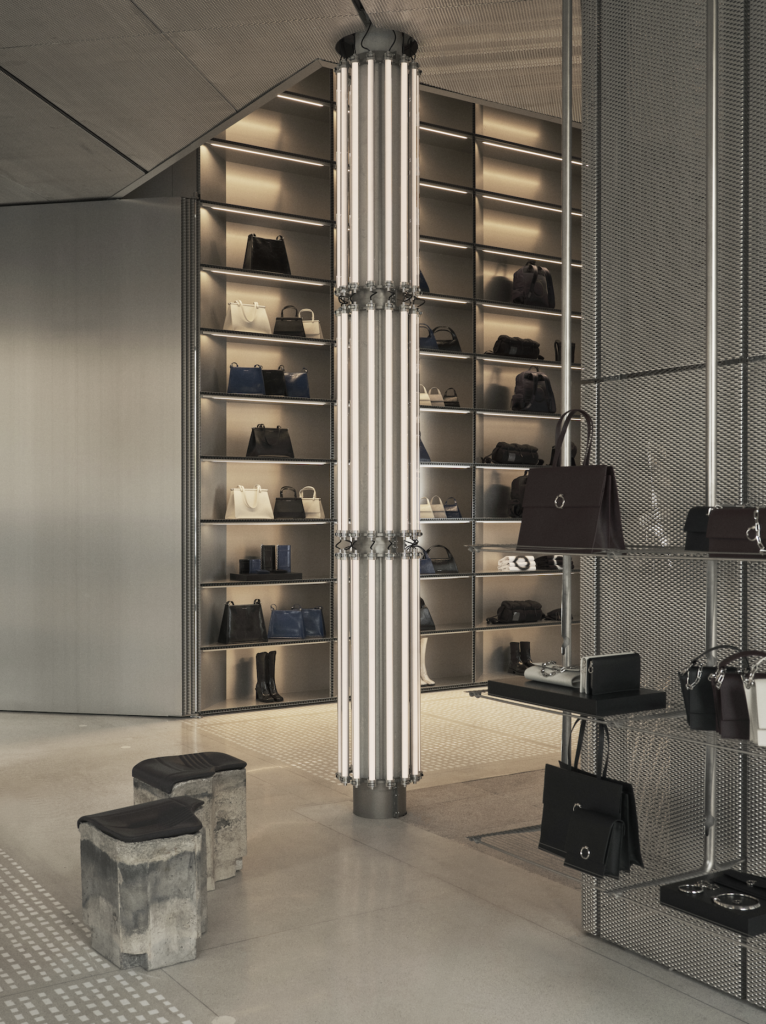
Palazzo Trussardi: Blending History with Modernity
The new concept developed for Palazzo Trussardi, including the flagship store, the ground floor café, and the upper floor restaurant, contrasts and integrates the building’s historical nature with modernity. In this context, light plays a fundamental role in space perception and area definition.
The restoration of the building has brought to light its most authentic material essence: the removal of superfluous elements and layers of drywall has revealed the original coverings of the palace made of marble walls and balcony floors, elements useful for the concept’s development in terms of reuse and functionalization.
The mirrored shelving infinitely multiplies the internal and external space like a kaleidoscope, standing in stark contrast to the roughly left pillars. All the furniture elements follow a precise idea of waste reduction, as they are designed to be disassembled or reconfigurable.
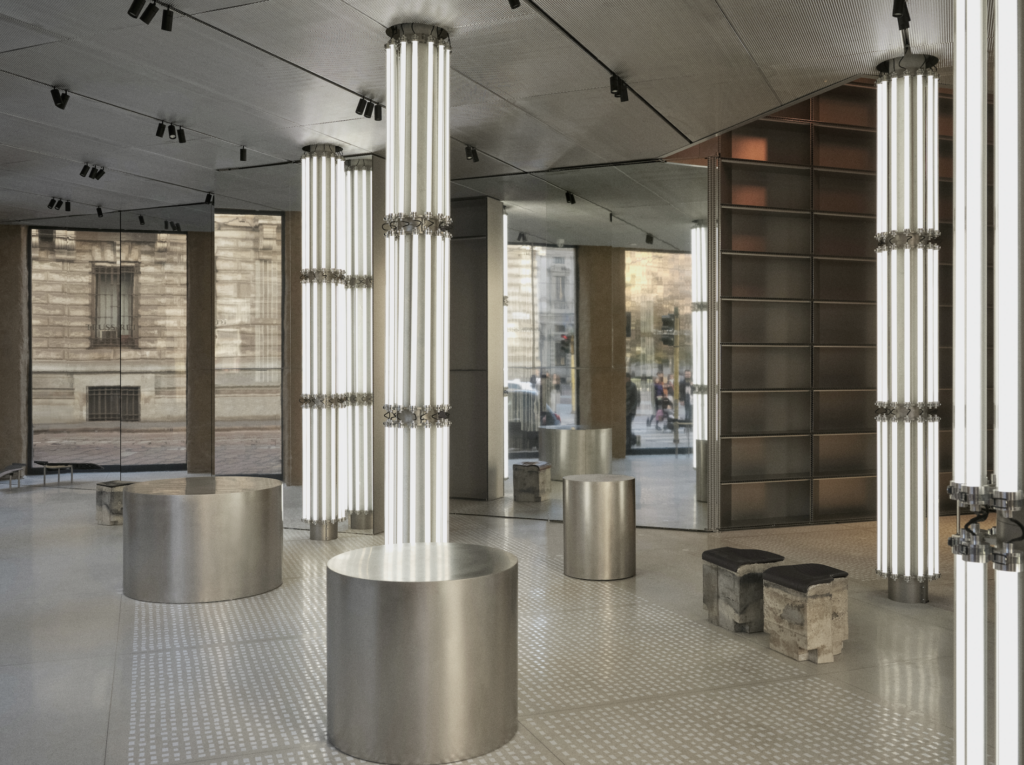
Lighting Design: A Structural and Emotional Force
Lighting at Palazzo Trussardi marks the environment and guides the journey through its interiors. B612’s luminous columns, the key of the lighting project, act almost as structural elements. They start from the ground floor’s commercial area, rise through the first floor, and reach the restaurant ceiling.
“Light tubes” play versatile roles across various areas, such as restrooms and dressing rooms. Complementing these, an additional lighting system, hidden within the metal ceiling grid, is specifically designed to accentuate and spotlight products.
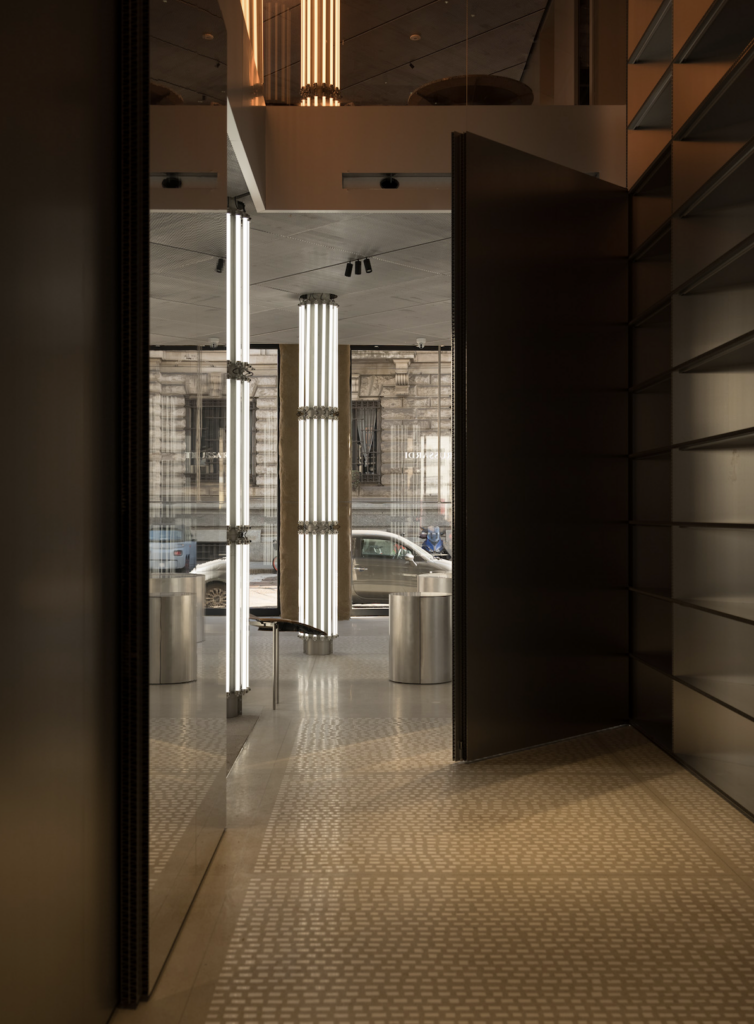
Each floor uses different light source colour temperatures: the commercial area features cooler light, while the bar and restaurant areas enjoy warmer, more intimate lighting.
Warm Dimming: Environmental Impact
Light intensity and colour variation are controlled by warm dimming, shifting from 4000K in retail to 1800K in dining areas. This approach harmonizes with the materials, where cold light highlights metallic surfaces for a neutral setting, making products stand out. Conversely, the restaurant enjoys a relaxed ambience with warm light and glare-free projectors.
